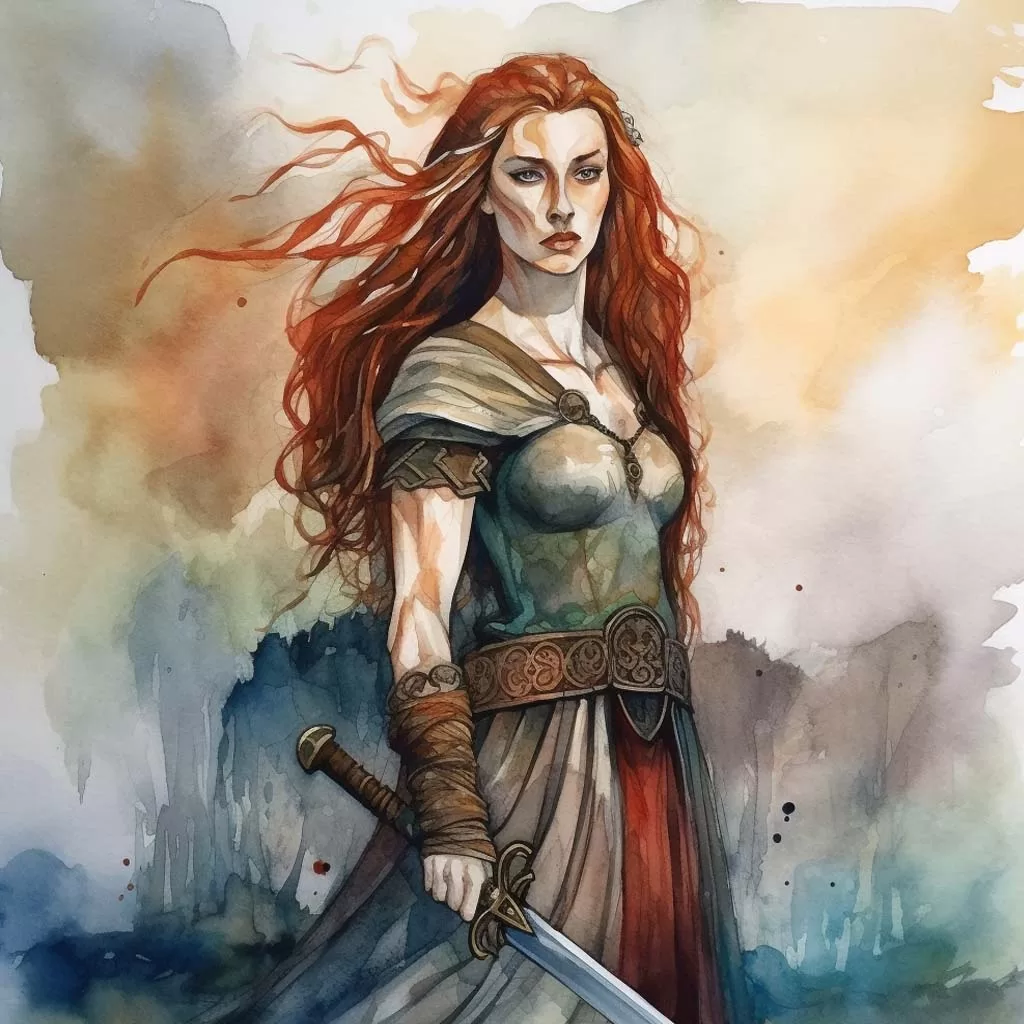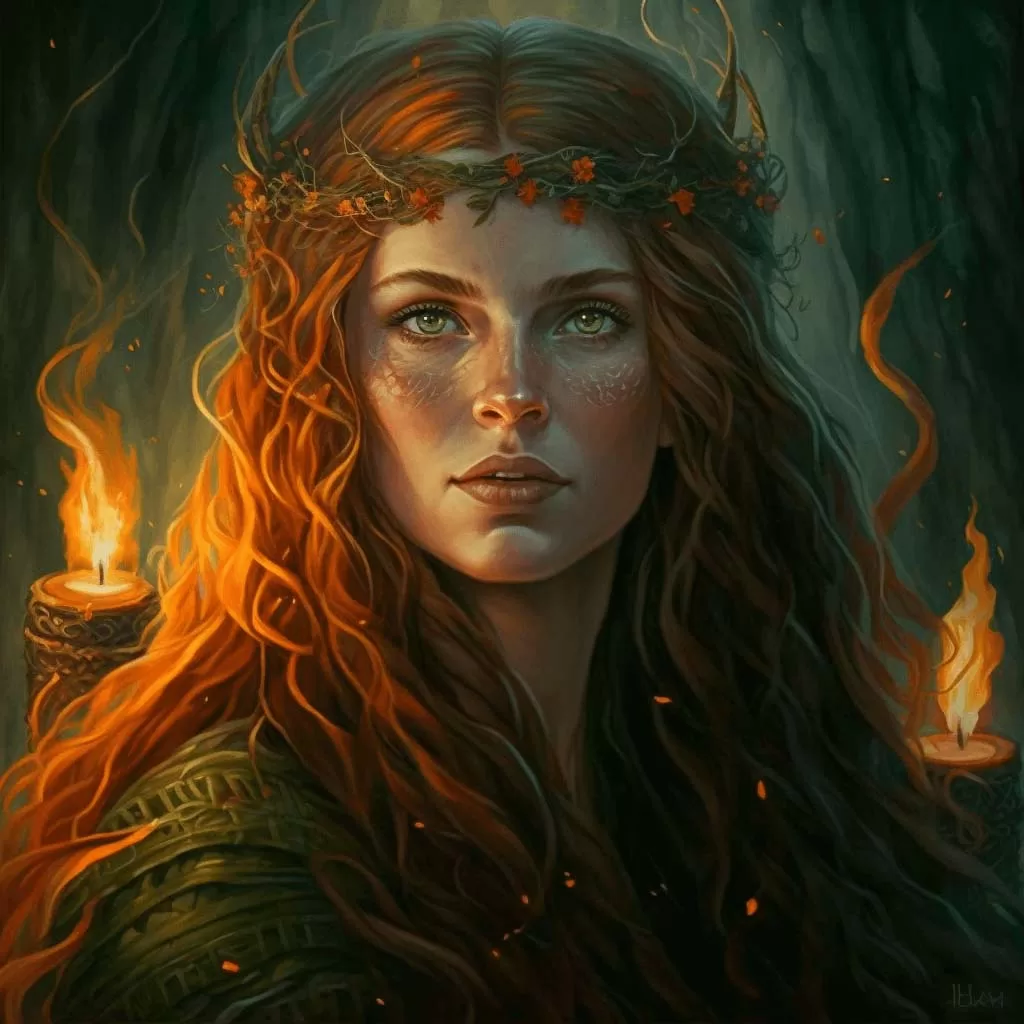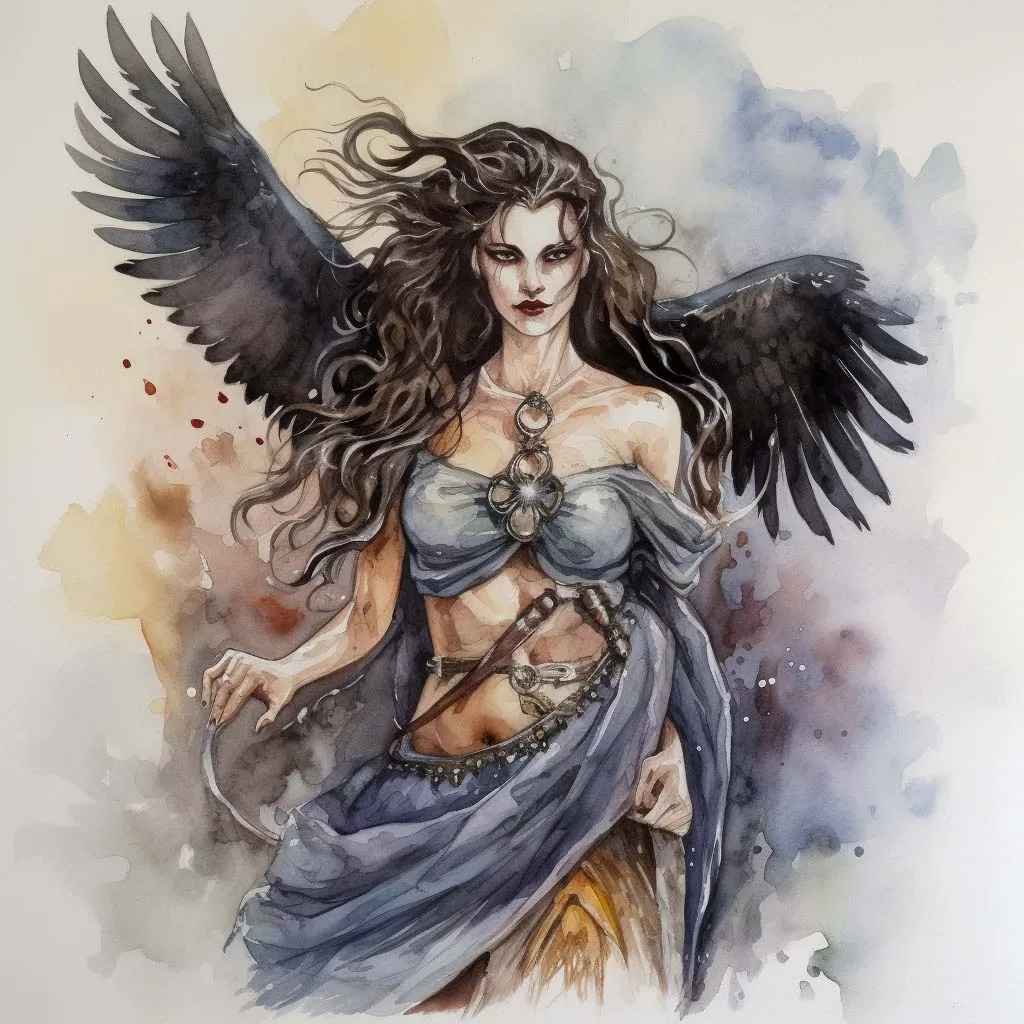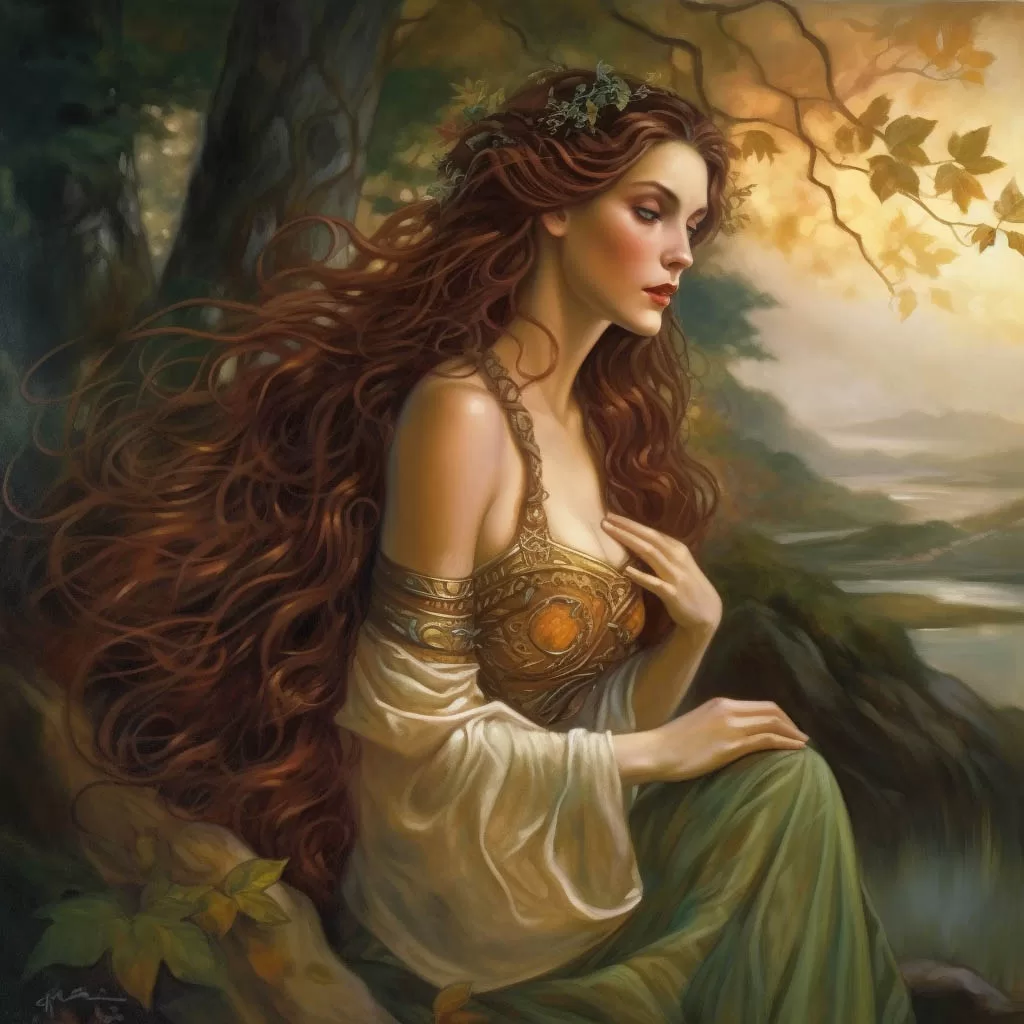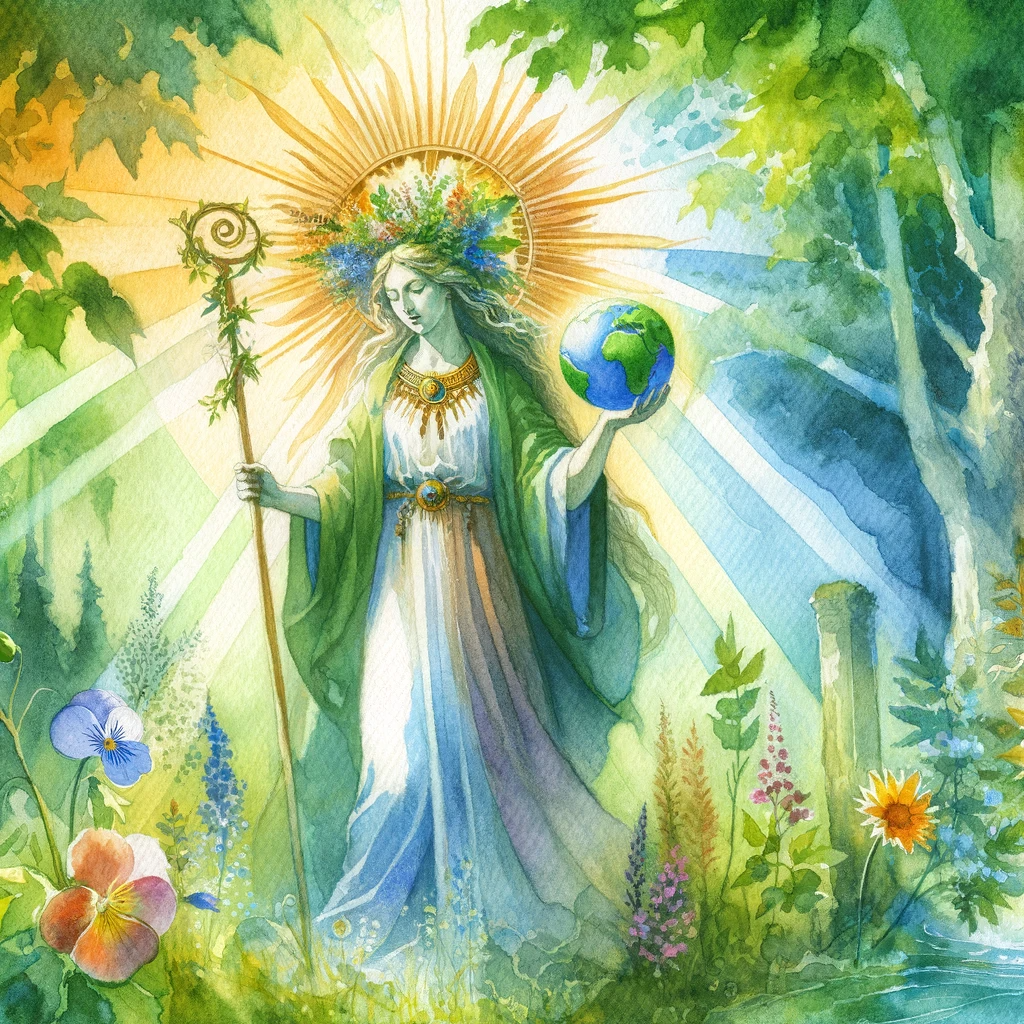In the mystical and enchanting land of ancient Celtic mythology, Rhiannon stands out as a captivating and enigmatic figure. As the goddess of love, beauty, and the Otherworld, she has captivated the hearts and imaginations of countless generations.
| Origins | Mabinogi | Symbolism | Culture |
In this comprehensive article, we’ll explore the many facets of Rhiannon’s divine persona, delving into her stories, symbolism, and significance within Celtic mythology. Drawing on various historical sources and modern interpretations, this article will whisk you away on a captivating journey through the enchanting world of Rhiannon, the Celtic goddess of love, beauty, and the Otherworld.
Origins and Historical Context
Celtic mythology is a rich and diverse tapestry of stories, characters, and themes that have captivated the imagination of the people of Ireland, Scotland, Wales, and other Celtic lands for centuries. These myths and legends, passed down through generations in oral tradition, were eventually recorded in various medieval manuscripts, providing a fascinating glimpse into the religious and cultural beliefs of the ancient Celts.
Rhiannon is one of the more prominent Celtic goddesses, particularly in Welsh folklore. Her stories are primarily found in the Mabinogi, a collection of Welsh tales compiled in the medieval period. Rhiannon’s divine attributes, such as her association with love, beauty, and the Otherworld, are deeply rooted in ancient Celtic beliefs and are intertwined with the legends and history of the Celtic people.
Rhiannon in the Mabinogi
In the Mabinogi, Rhiannon’s story is divided into two main narratives: the tale of Pwyll, Prince of Dyfed, and the story of Manawydan, son of Llyr. Throughout these tales, Rhiannon’s divine nature and her connection to love, beauty, and the Otherworld are explored in depth.
In the tale of Pwyll, Prince of Dyfed, Rhiannon first appears as a mysterious and enchanting figure riding a magnificent white horse. She eventually reveals that she has chosen Pwyll as her husband, and the two marry. However, Rhiannon faces numerous trials and tribulations, including the disappearance of her son Pryderi, false accusations of murder, and a humiliating penance. Despite these hardships, Rhiannon remains resilient, and her name is ultimately cleared when her son is found and returned to her.
After Pwyll’s death, Rhiannon marries Manawydan, son of the sea god Llyr, and brother of the famous hero Bran the Blessed. Their story is marked by a series of mysterious and magical events, including an enchanted mist that causes the people and animals of Dyfed to vanish, and the imprisonment of Rhiannon and Pryderi by a sorcerer. Through wisdom and cunning, Manawydan is able to break the enchantment, free Rhiannon and Pryderi, and restore peace to their kingdom.
Symbolism and Themes
Rhiannon’s divine nature is reflected in her association with love and beauty, as well as her connection to the Otherworld. Her relationships with Pwyll and Manawydan demonstrate the power of love to transcend adversity and bring people together, while her beauty serves as a symbol of her divine status.
As a goddess of the Otherworld, Rhiannon also embodies the mysteries and magic of this mystical realm. The enchantments, magical creatures, and strange occurrences in her stories serve as reminders of her connection to this otherworldly plane. Rhiannon’s resilience and ability to overcome adversity are central themes in her stories, inspiring those who encounter her tale and demonstrating the importance of perseverance and remaining true to oneself.
Rhiannon in Modern Culture
Rhiannon’s enduring appeal and influence can be seen in various aspects of modern culture, from spirituality and religion to music and literature.
In contemporary Neo-Pagan and Wiccan traditions, Rhiannon is revered as a powerful goddess of love, beauty, and the Otherworld. Followers of these spiritual paths often invoke her in rituals and ceremonies, seeking her guidance and assistance in matters of the heart and personal growth.
Her influence also extends to the arts, as evidenced by the popular song “Rhiannon” by Fleetwood Mac, written by Stevie Nicks. Inspired by the mythical figure and her enchanting allure, the song has captured the hearts of listeners for generations. Rhiannon has also appeared as a character or inspiration in numerous novels, poems, and other works of art, demonstrating her continued resonance in contemporary culture.
Rhiannon, the Celtic goddess of love, beauty, and the Otherworld, is a captivating and enigmatic figure whose stories and symbolism have captivated the hearts and minds of generations. From her mystical encounters in the Mabinogi to her enduring influence in modern culture and spirituality, Rhiannon remains a powerful and enigmatic figure in the tapestry of Celtic mythology.
References
- The Mabinogion. Translated by Sioned Davies, Oxford University Press, 2007.
- The Mabinogion. Translated by Lady Charlotte Guest, Dover Publications, 1997.
- Freeman, Philip. Celtic Mythology: Tales of Gods, Goddesses, and Heroes. Oxford University Press, 2017.
- Aldhouse-Green, Miranda. The Celtic Myths: A Guide to the Ancient Gods and Legends. Thames & Hudson, 2015.
- Telyndru, Jhenah. Rhiannon: Divine Queen of the Celtic Britons. Moon Books, 2018.



